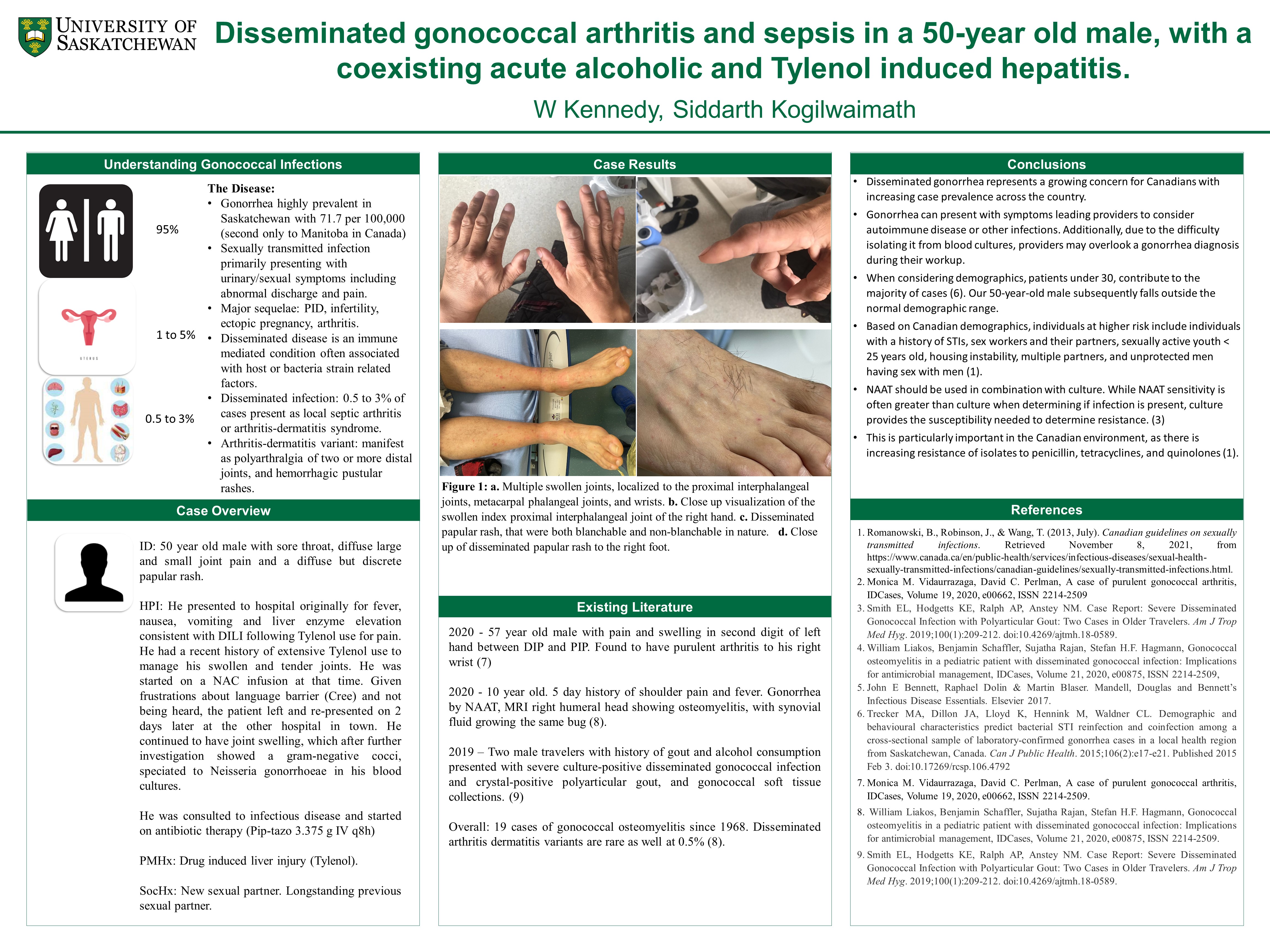
A1.5: Disseminated gonococcal arthritis and sepsis in a 50-year male, with a coexisting acute alcoholic and Tylenol induced hepatitis
William Kennedy, Siddharth Kogilwaimath
A 50 year-old male, initially presented to emergency department with a several day history of fever, nausea and vomiting and was diagnosed to have acute alcoholic hepatitis and Tylenol overdose. He was admitted to the hospital and was started on treatment for these. However, his blood cultures returned back positive for gram negative diplococci and he was started on intravenous ceftriaxone. Unfortunately, due to a significant language barrier, the patient left against medical advice. The organism was identified as Neisseria gonorrhoeae and he was subsequently recalled back to the ER. He endorsed a sore throat, diffuse large and small joint pain and a diffuse but discrete and diffuse papular rash. He used Acetaminophen to treat the joint pain. On physical exam there was a mild 3/6 blowing systolic murmur heard loudest at the mitral valve. There were no splinter hemorrhages, Osler nodes, or Janeway lesions present. He was noted to have significant swelling and pain to his fingers, (PIPs, DIPs and MCPs) wrists, ankles and knees bilaterally. The swelling was particularly prominent in his wrists, leading to further imaging with an ultrasound, however neither wrist had a drainable effusion present. Gonorrhea is a common sexually transmitted infection, caused by Neisseria gonorrhoeae. It commonly causes infections at sites of exposure such as urethra, cervix, pharynx and rectum. While rare, disseminated gonococcal infection (DGI) occurs in 0.5 to 3% of cases and can present with a range of manifestations including hepatitis, endocarditis, meningitis, septic arthritis or an arthritis-dermatitis syndrome. Host factors (eg. Complement deficiencies) and certain bacterial strains may be associated with DGI. Local mucosal symptoms may be absent, leading to delay in diagnosis. DGI is a potentially serious illness with associated complications that could be easily confused with other rheumatological or infectious conditions.
